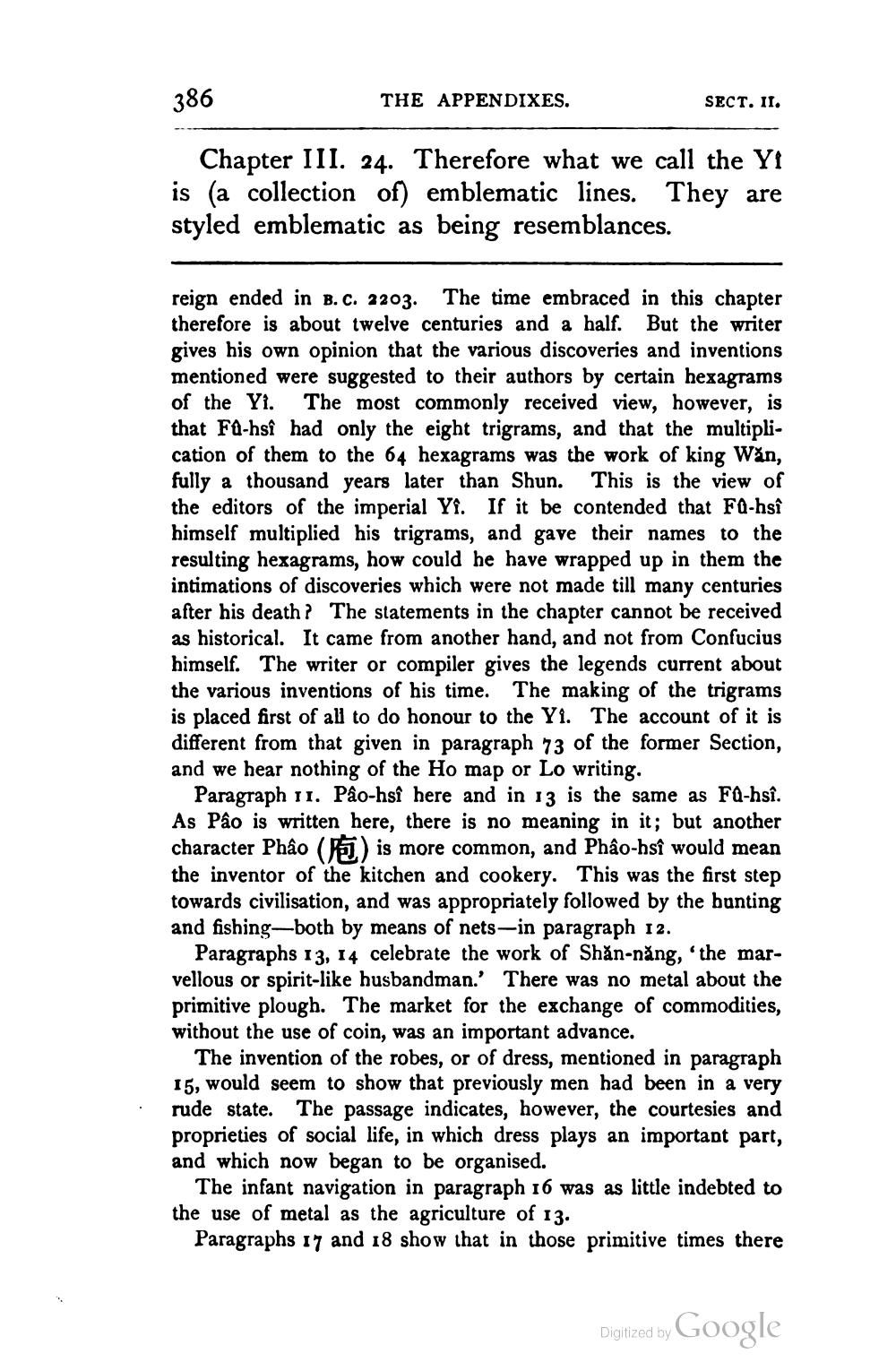________________
386
THE APPENDIXES.
SECT. II.
Chapter III. 24. Therefore what we call the Yi is (a collection of) emblematic lines. They are styled emblematic as being resemblances.
reign ended in B. C. 2203. The time embraced in this chapter therefore is about twelve centuries and a half. But the writer gives his own opinion that the various discoveries and inventions mentioned were suggested to their authors by certain hexagrams of the Yi. The most commonly received view, however, is that Fu-hs had only the eight trigrams, and that the multiplication of them to the 64 hexagrams was the work of king Wăn, fully a thousand years later than Shun. This is the view of the editors of the imperial Yî. If it be contended that Fû-hsî himself multiplied his trigrams, and gave their names to the resulting hexagrams, how could he have wrapped up in them the intimations of discoveries which were not made till many centuries after his death? The statements in the chapter cannot be received as historical. It came from another hand, and not from Confucius himself. The writer or compiler gives the legends current about the various inventions of his time. The making of the trigrams is placed first of all to do honour to the Yi. The account of it is different from that given in paragraph 73 of the former Section, and we hear nothing of the Ho map or Lo writing.
Paragraph 11. Pâo-hsî here and in 13 is the same as Fû-hsî. As Pâo is written here, there is no meaning in it; but another character Phâo () is more common, and Phâo-hsî would mean the inventor of the kitchen and cookery. This was the first step towards civilisation, and was appropriately followed by the bunting and fishing-both by means of nets-in paragraph 12.
Paragraphs 13, 14 celebrate the work of Shăn-năng, 'the marvellous or spirit-like husbandman.' There was no metal about the primitive plough. The market for the exchange of commodities, without the use of coin, was an important advance.
The invention of the robes, or of dress, mentioned in paragraph 15, would seem to show that previously men had been in a very rude state. The passage indicates, however, the courtesies and proprieties of social life, in which dress plays an important part, and which now began to be organised.
The infant navigation in paragraph 16 was as little indebted to the use of metal as the agriculture of 13.
Paragraphs 17 and 18 show that in those primitive times there
Digitized by
Google




